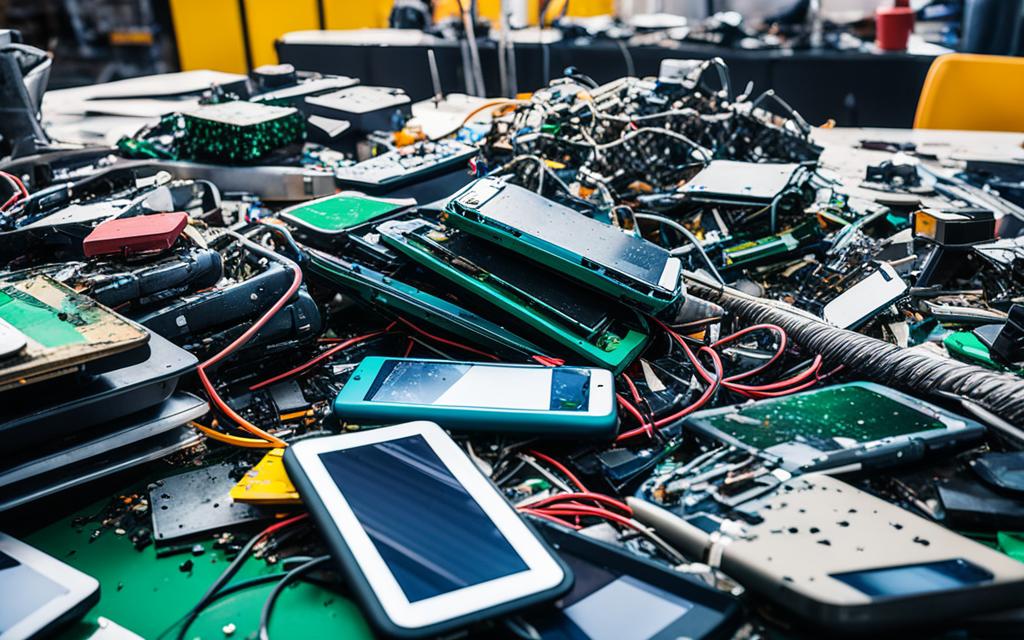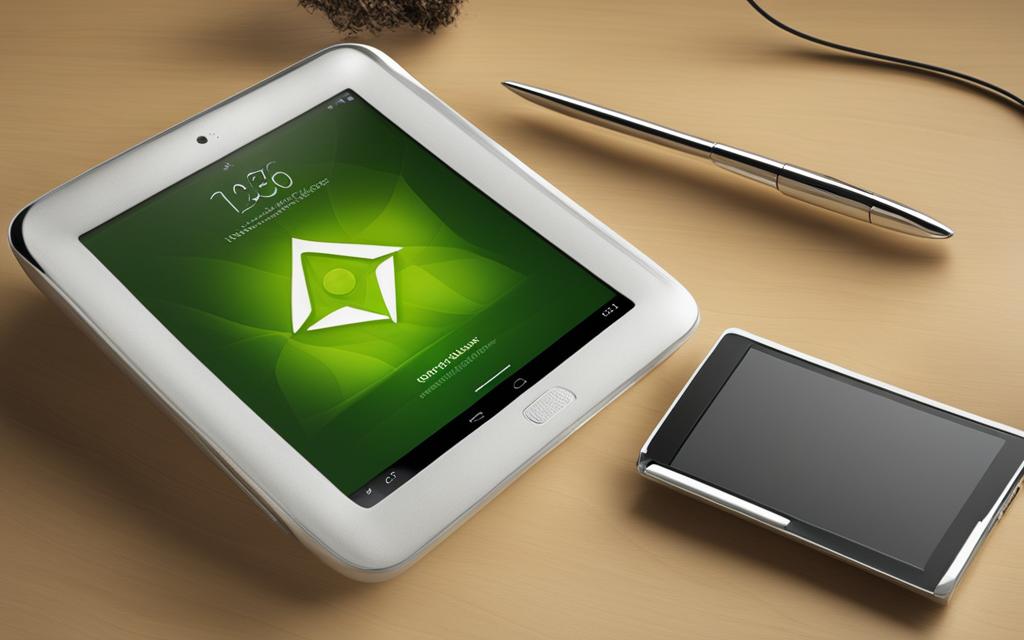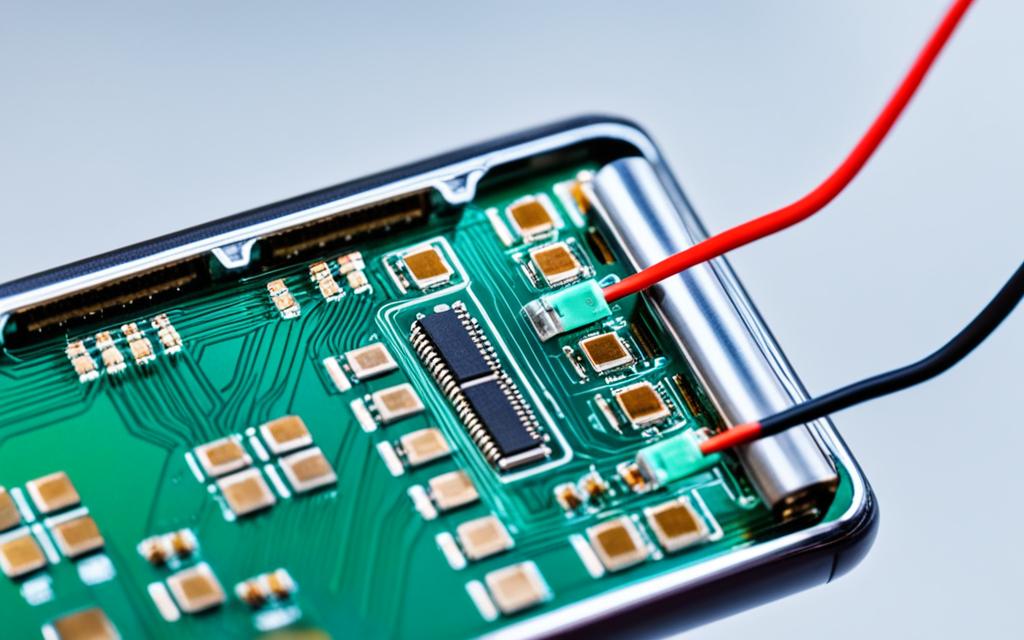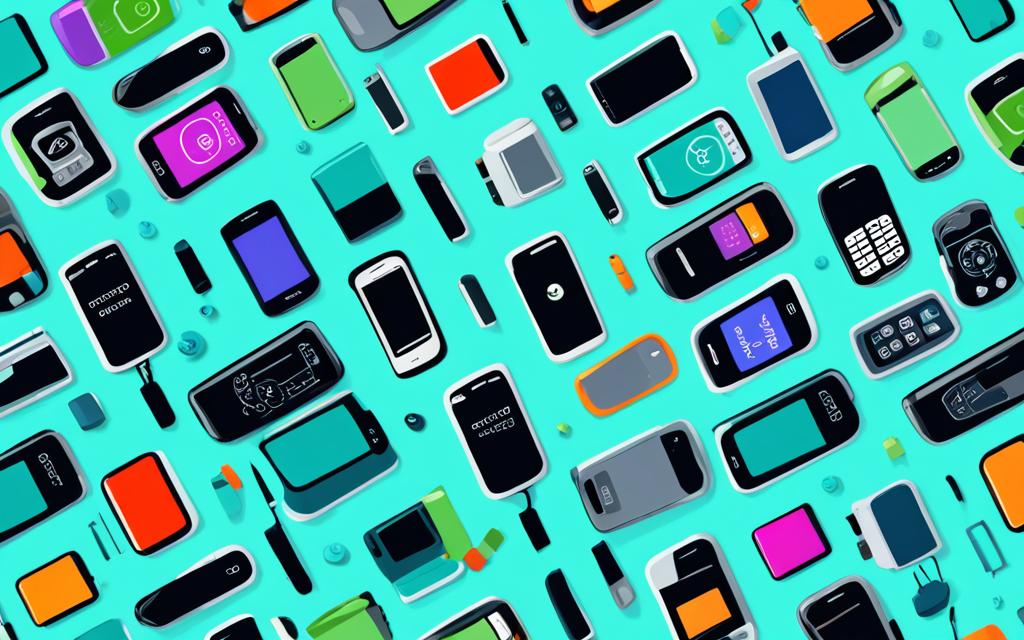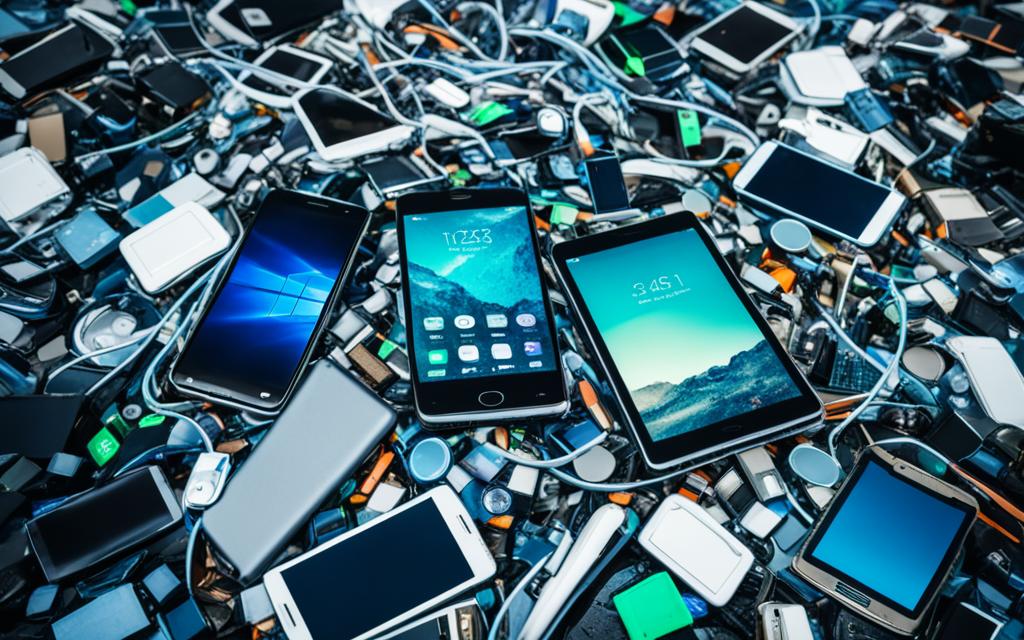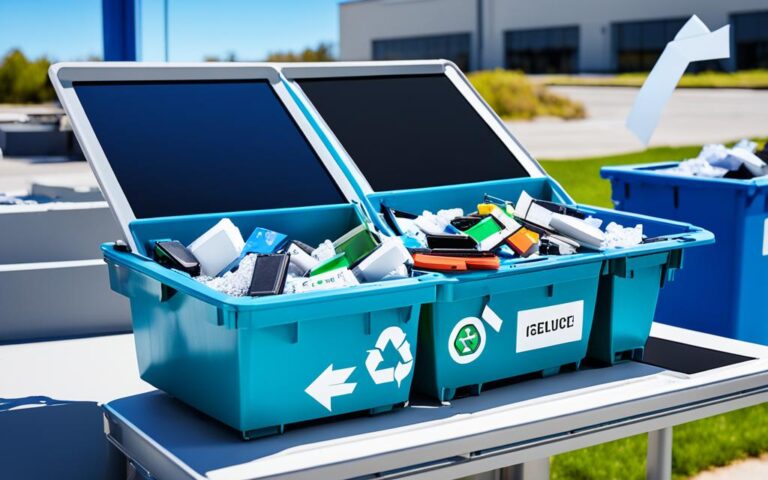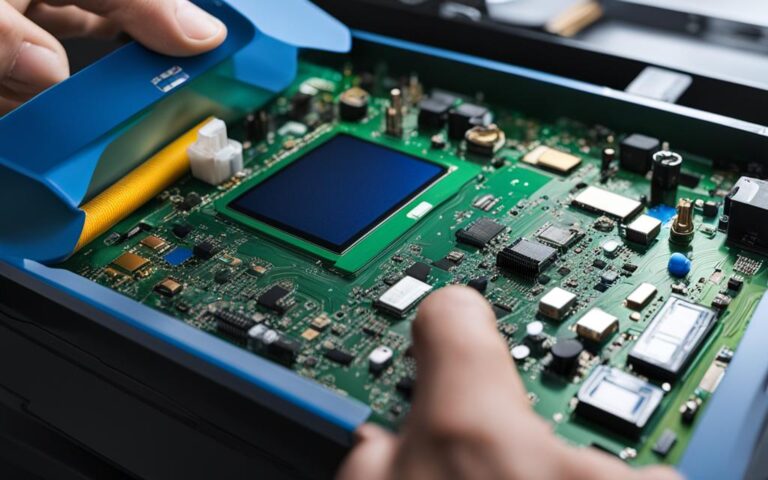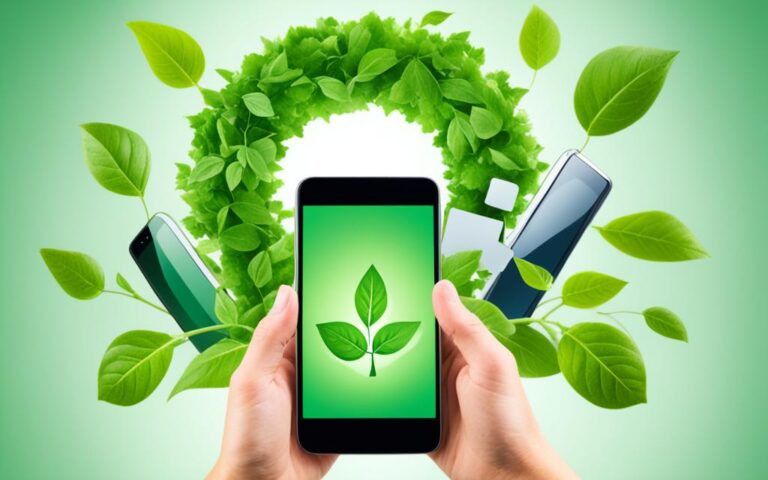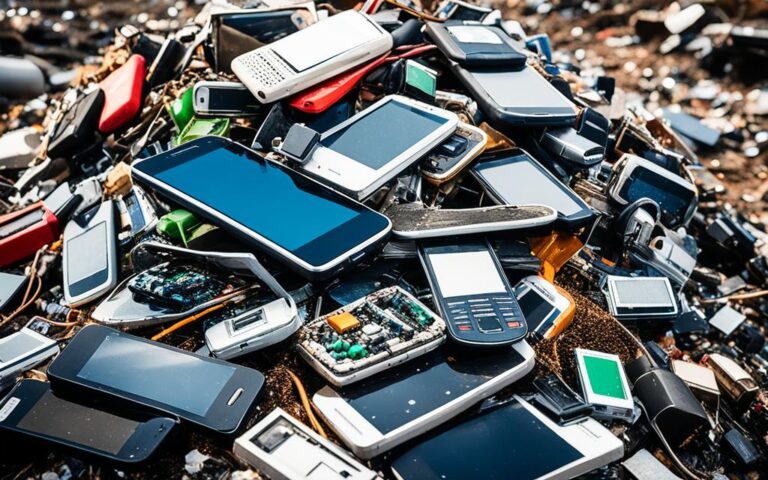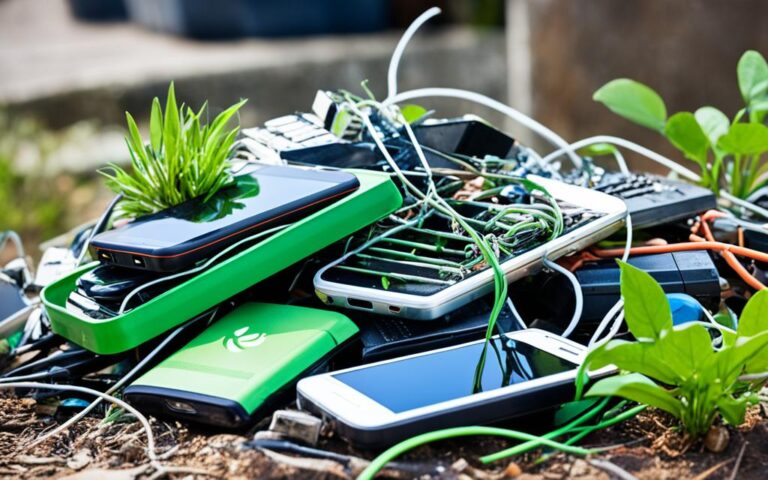From Collection to Rebirth: The Lifecycle of Recycled Phones and Tablets
Have you ever wondered what happens to your old phones and tablets after you upgrade to the latest models? Instead of ending up in landfills, these devices embark on a remarkable journey of rebirth. In this article, we will explore the lifecycle of recycled phones and tablets, shedding light on the various stages they go through from collection to their extraordinary transformation.
Recycled phones and tablets play a vital role in our pursuit of a more sustainable future. Rather than discarding them, we can harness their potential to create a positive impact on both the environment and society. As we delve into the fascinating world of recycling, we will discover the power of giving these devices a new lease of life.
From repurposing old phones and tablets for innovative purposes to exploring alternative mobile operating systems, this article will showcase the limitless possibilities that lie within our grasp. Through repair and reuse, we can divert discarded electronic devices from the waste stream and unlock economic opportunities.
Join us on this captivating journey as we unravel the secrets of the recycled phone and tablet lifecycle. Together, we can embrace the principles of the circular economy and create a more sustainable and prosperous future.
The Power of Reuse: Giving Old Phones and Tablets a New Life
When we upgrade to a new phone or tablet, our old devices often end up collecting dust. However, instead of letting them go to waste, they can be repurposed and reused in a variety of ways. By recycling phones and recycling tablets, we can extend their lifespan and reduce electronic waste.
One creative way to repurpose old smartphones is to turn them into DIY security cameras. With the help of apps like Alfred or Manything, you can transform your old device into a home security system, providing peace of mind while saving money. Simply mount the phone in a strategic location and monitor the live feed from another device.
Another option for repurposing old smartphones is to give them to children for educational purposes. Many educational apps and platforms are available that can turn these devices into valuable learning tools. From interactive books to educational games, old phones can provide a wealth of knowledge and entertainment for young minds.
Old smartphones can also be used as dedicated gaming systems. By installing gaming apps or emulators, you can transform your old phone into a portable gaming console. This allows you to enjoy your favorite games without draining the battery on your new device.
Similarly, tablets can be repurposed in creative ways. They can serve as video chat devices, allowing you to stay connected with loved ones through apps like Skype or Facetime. Simply prop up the tablet and enjoy high-quality video calls with family and friends.
Tablets can also be transformed into wireless webcams, providing an extra set of eyes for monitoring your home or office. With apps like AtHome Video Streamer, you can easily turn your tablet into a surveillance camera, helping you keep an eye on your surroundings remotely.
Another clever use for old tablets is as cheap alarm clocks. By installing alarm clock apps, you can repurpose your tablet as a stylish bedside alarm clock. Its larger display makes it easier to read the time and set alarms, enhancing your morning routine.
By repurposing old phones and tablets, we not only reduce electronic waste but also unlock their potential for new uses. Letting these devices collect dust in a drawer does not do justice to their capabilities. Instead, we can give them a new lease on life and make a positive impact on the environment.
Repurposing Ideas for Old Phones and Tablets
| Old Phones | Old Tablets |
|---|---|
| DIY security cameras | Video chat devices |
| Children’s educational tools | Wireless webcams |
| Dedicated gaming systems | Cheap alarm clocks |
Exploring Alternative Mobile Operating Systems
In the ever-evolving world of smartphones and tablets, it is no secret that Android and iOS dominate the market. However, for those seeking greater privacy and control over their personal information, alternative mobile operating systems provide a compelling option. These open-source alternatives offer users the ability to customize their devices and protect their data, providing a refreshing alternative to the mainstream operating systems.
One such example is LineageOS, an alternative mobile OS that allows users to breathe new life into their old devices. By unlocking the potential of older smartphones and tablets, LineageOS offers a unique user experience and a sense of liberation from the confines of proprietary operating systems. Additionally, /e/ (pronounced “ee”) offers a privacy-oriented OS that emphasizes data protection and a Google-free experience, giving users more control over their digital lives.
Another popular open-source mobile OS is Ubuntu Touch. Powered by Canonical, this OS provides a seamless convergence between smartphones and desktops, allowing for a unified experience across various devices. Ubuntu Touch empowers users to interact with their devices in innovative ways, with features like desktop-mode, multi-window support, and advanced customization options.
PureOS is yet another exciting alternative mobile OS that focuses on security, privacy, and user freedom. Developed by Purism, a company dedicated to privacy-oriented computing, PureOS offers a holistic approach to digital well-being. With a strong emphasis on transparency and respect for user rights, PureOS ensures that users maintain complete control over their data and devices.
“Alternative mobile operating systems like LineageOS, /e/, Ubuntu Touch, and PureOS provide users with the freedom to customize their devices, safeguard their data, and break away from the mainstream. These open-source options breathe new life into old phones and tablets, offering a fresh and unique experience.”
Alongside these alternative mobile operating systems, IT Asset Disposition (ITAD) services play a vital role in the lifecycle of recycled phones and tablets. ITAD services encompass data destruction, repair and reuse, and parts harvesting, ensuring that old devices are properly managed. By partnering with ITAD providers, individuals and businesses can contribute to a more sustainable electronic ecosystem while extracting value from their unused devices.
Summary
Alternative mobile operating systems offer users greater privacy, control, and customization options. LineageOS, /e/, Ubuntu Touch, and PureOS provide alternatives to traditional operating systems, allowing users to repurpose and extend the life of their devices. In conjunction with ITAD services, these alternative systems contribute to a more sustainable and responsible approach to technology.
Shifting Focus: Embracing Repair and Reuse
In the ever-evolving e-scrap industry, traditional recycling operations have encountered obstacles posed by market volatility and increased scrutiny on e-scrap export activities. In response, forward-thinking companies have redirected their attention towards repair and reuse of electronic devices. By embracing repair and refurbishment, they not only reduce dependence on commodities but also unlock profitable opportunities through data security services and partnerships with original equipment manufacturers (OEMs).
Repairing and reusing electronic devices offer a multitude of benefits. Firstly, it counters the throwaway culture by extending the lifespan of devices, reducing electronic waste, and combating the negative environmental impacts associated with manufacturing new devices. Secondly, it presents a compelling business proposition with the potential for substantial profit growth.
Data security has become a critical concern in today’s digitally-driven world, making it essential to protect sensitive information when disposing of electronic devices. By offering robust data security services, companies involved in repair and reuse can assure their clients that their data will not fall into the wrong hands. This added layer of protection enhances the trust and confidence of customers, fostering long-lasting relationships.
Moreover, embracing repair and reuse opens up avenues for building profitable partnerships with OEMs. These collaborations can involve obtaining original replacement parts and accessing exclusive technical support, streamlining the repair process and improving overall efficiency.
“By shifting our focus towards repair and reuse, we are not only making a positive impact on the environment but also maximizing our revenue potential. Repairing and refurbishing electronic devices has proven to be a win-win situation, combining sustainability efforts with profitable business strategies.”
With society’s increasing awareness of the environmental and economic benefits of repair and reuse, the market for ITAD services has witnessed significant growth. By embracing this shift in focus, companies can tap into this lucrative market segment. Repair and reuse provide an opportunity for companies to differentiate themselves within the e-scrap industry, driving customer loyalty and attracting new business prospects.
By adopting a forward-thinking approach and embracing repair and reuse, companies can reshape the industry’s landscape while contributing to a more sustainable future. The combination of environmental consciousness, profitable business ventures, and data security services makes repair and reuse a compelling proposition for both businesses and consumers alike.
The Profit Potential of Repair and Reuse
Let’s delve deeper into the profit potential of repair and reuse. The table below showcases a comparison between traditional recycling, repair, and reuse, highlighting the key financial advantages:
| Traditional Recycling | Repair and Reuse | |
|---|---|---|
| Revenue Generation | Reliant on commodity market fluctuations | Opportunity to generate additional revenue through repair services and partnerships with OEMs |
| Data Security Services | N/A | Potential to offer data security services, attracting clients concerned about protecting sensitive information |
| Environmental Impact | Reduces electronic waste but relies on manufacturing new devices | Significantly reduces electronic waste by extending the lifespan of devices through repair and reuse |
The table clearly demonstrates the profit potential of repair and reuse. By offering ITAD services that prioritize repair and refurbishment, companies can capitalize on multiple revenue streams, enhance data security, and contribute to a greener, more sustainable future. Embracing repair and reuse not only makes economic sense but also serves as a catalyst for positive change in the e-scrap industry.
The Benefits of ITAD in the Circular Economy
IT Asset Disposition (ITAD) plays a vital role in promoting a sustainable and circular economy by extending the lifespan of electronic devices and reducing electronic waste. As society becomes increasingly aware of the importance of environmental conservation, the responsible management of obsolete equipment has gained prominence.
One of the significant concerns related to retired devices is data security. As individuals and organizations upgrade their phones and tablets, the risk of sensitive information falling into the wrong hands becomes a pressing issue. ITAD firms tackle this challenge by investing in secure data destruction methods, ensuring that personal and confidential data are irretrievably wiped from the devices.
Moreover, ITAD companies actively collaborate with Original Equipment Manufacturers (OEMs) and offer comprehensive asset management services. These services include repair, refurbishment, and parts harvesting. By partnering with OEMs, ITAD firms contribute to a more sustainable and profitable electronics industry.
Benefits of ITAD Services in the Circular Economy:
- Extending the lifespan of electronic devices
- Reducing electronic waste
- Protecting sensitive information through secure data destruction
- Collaborating with OEMs for comprehensive asset management
- Promoting a sustainable and profitable electronics industry
By adopting ITAD practices and embracing the circular economy, businesses can effectively minimize their environmental impact while maximizing their economic potential. This sustainable approach ensures that valuable resources are not wasted but instead diverted back into the production cycle, contributing to a greener and more prosperous future.
Conclusion
The lifecycle of recycled phones and tablets encompasses the collection, repurposing, and reuse of old devices, contributing to a more sustainable electronics industry. By embracing the principles of the circular economy and ITAD (IT asset disposition), we can reduce electronic waste and create a positive impact on the environment.
One key takeaway is the importance of finding new uses for old smartphones and tablets. Through repurposing, these devices can be given a new lease of life, extending their lifespan and reducing the need for new manufacturing. This not only decreases electronic waste but also conserves valuable resources and reduces the carbon footprint associated with production.
Furthermore, the shift towards repair and reuse in the e-scrap industry presents opportunities for profit and data security services. By offering ITAD services such as data destruction and repair and refurbishment, companies can generate additional revenue and build lasting relationships with clients. This approach not only reduces dependence on commodities but also fosters a more sustainable and economically viable electronics sector.
In conclusion, the lifecycle of recycled phones and tablets offers immense potential for environmental and economic benefits. By adopting a circular economy mindset and embracing ITAD practices, businesses and individuals alike can contribute to a more sustainable future while reaping the rewards of reduced waste, cost savings, and increased revenue opportunities.
FAQ
What is the lifecycle of recycled phones and tablets?
The lifecycle of recycled phones and tablets involves the collection, repurposing, and reuse of old devices.
How can old phones and tablets be repurposed and reused?
Old smartphones can be turned into DIY security cameras, given to children for educational purposes, or used as dedicated gaming systems. Similarly, tablets can be transformed into video chat devices, wireless webcams, or even cheap alarm clocks.
What are alternative mobile operating systems?
Alternative mobile operating systems are open-source options, such as LineageOS, /e/, Ubuntu Touch, and PureOS, which provide users with greater privacy and control over their personal information.
What is the role of ITAD in the lifecycle of recycled phones and tablets?
ITAD (IT asset disposition) services offer data destruction, repair and reuse, and parts harvesting for recycled phones and tablets.
Why is there a shift towards repair and reuse in the e-scrap industry?
Traditional recycling operations have faced challenges due to volatility in the commodities market and increased scrutiny on e-scrap export activities. Repair and reuse not only reduce reliance on commodities but also provide opportunities for profit and data security services.
How do ITAD companies contribute to the circular economy?
ITAD companies extend the lifespan of electronic devices, reduce electronic waste, invest in secure data destruction methods, and offer comprehensive asset management services, including repair, refurbishment, and parts harvesting.

